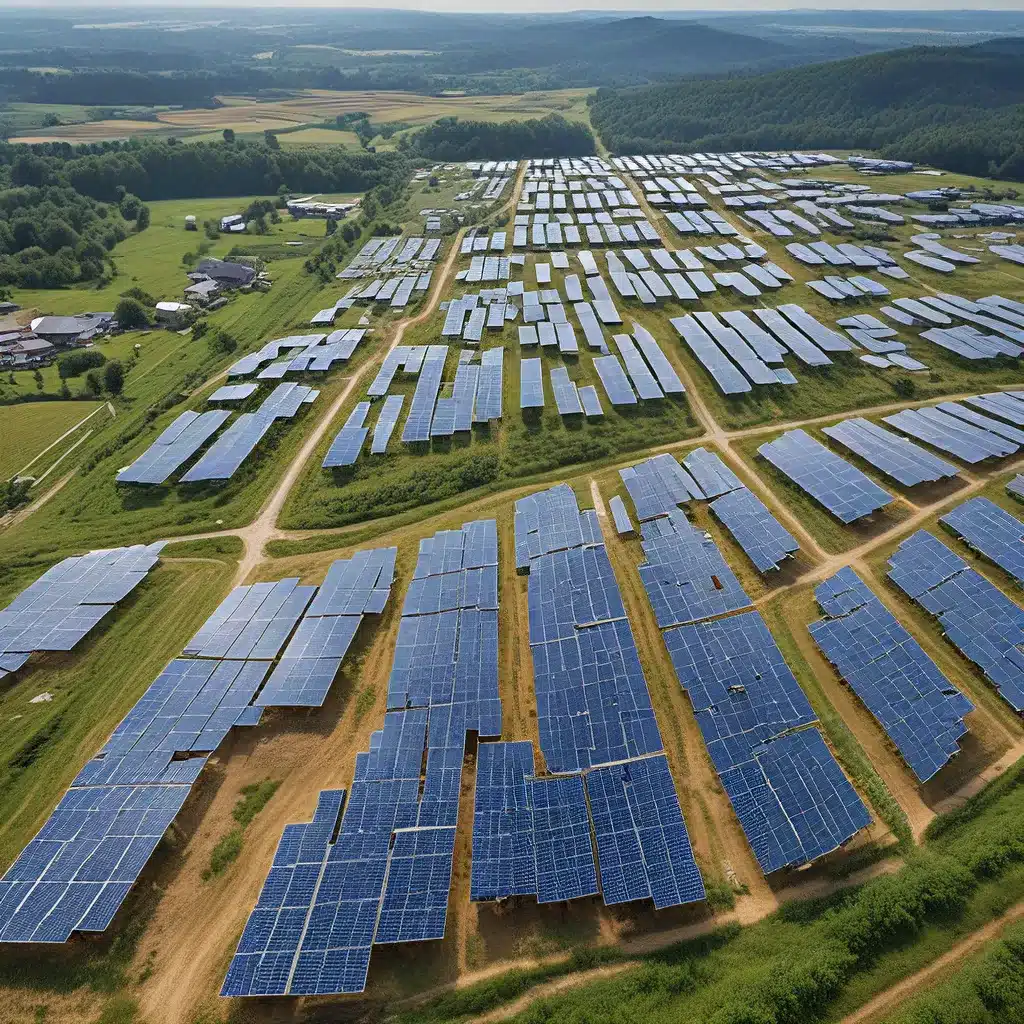
Renewable Energy’s Harmonious Symphony
As I delved into the world of renewable energy solutions, I couldn’t help but feel a sense of excitement and wonder. It’s like discovering a hidden symphony, where each renewable technology plays a unique melody, and when combined, they create a harmonious masterpiece.
In the bustling city of Douala, Cameroon, the energy landscape is undergoing a transformative shift. The region’s diverse renewable resources, from the sun’s radiant power to the untapped potential of wind and diesel, have inspired the creation of an ingenious hybrid energy system. This innovative approach is poised to redefine the way we think about powering our communities, offering a symphony of sustainable solutions.
Orchestrating Renewable Energy’s Potential
I recently had the opportunity to explore the techno-economic feasibility of this revolutionary hybrid system, and let me tell you, the findings are nothing short of remarkable. By seamlessly integrating solar photovoltaic (PV), diesel generators, and battery storage, this hybrid solution is designed to address the unique energy needs of Douala’s diverse consumer base.
Firewinder, the renewable energy solutions provider, has been at the forefront of this groundbreaking project. Their team of experts has meticulously analyzed the region’s energy demands, climate patterns, and regulatory frameworks to craft a harmonious system that delivers reliable, cost-effective, and environmentally-friendly power.
Harmonizing Energy Consumption Patterns
One of the key aspects of this hybrid system is its ability to cater to the varying energy needs of Douala’s consumers. By categorizing them into low, medium, and high usage groups, the researchers have developed a nuanced understanding of the region’s energy dynamics.
For the low-usage consumers, the system’s solar PV component takes center stage, seamlessly meeting their energy requirements with its abundant solar resources. As we move up the consumption spectrum, the diesel generators play a more prominent role, ensuring a reliable supply of power during periods when the sun’s energy may be less available.
But the real symphony lies in the way these elements work in harmony. The battery storage system serves as the conductor, orchestrating the flow of energy, ensuring that no note is missed and every demand is met with precision.
Harmonizing the Bottom Line
The financial implications of this hybrid system are equally impressive. The researchers have calculated the Net Present Cost (NPC) and Levelized Cost of Electricity (LCOE), and the results are nothing short of remarkable.
For the low-usage consumers, the NPC has been reduced from a staggering 27,096 to a mere 3,266, a testament to the system’s cost-effectiveness. The LCOE, a crucial metric in the energy industry, has also seen a significant improvement, with the updated rates for low, medium, and high usage groups standing at $0.07/kWh, $0.08/kWh, and $0.06/kWh, respectively.
These figures not only highlight the financial viability of the hybrid system but also underscore its potential to transform the energy landscape in Douala. By offering a cost-effective and reliable solution, this hybrid system has the power to enhance energy access, foster sustainable development, and improve the overall quality of life for the region’s residents.
Harmonizing Challenges and Constraints
It’s important to note that the integration of renewable energy technologies is not without its challenges. The researchers have identified several key hurdles that must be addressed to ensure the seamless operation of this hybrid system.
Temperature fluctuations, for instance, can have a significant impact on the efficiency of the solar PV components, requiring careful monitoring and adjustment. Equipment costs and regulatory compliance also pose their own unique sets of obstacles, requiring a delicate balance of innovation and collaboration with policymakers.
Furthermore, the operational nuances, such as maintenance and grid integration, play a crucial role in maintaining the system’s efficiency and reliability. The researchers have acknowledged the importance of addressing these constraints to unlock the full potential of this hybrid solution.
Harmonizing the Future
As I reflect on the insights gleaned from this groundbreaking research, I can’t help but feel a sense of optimism for the future of renewable energy integration, not just in Douala, but across the globe. This hybrid system serves as a shining example of the harmonious potential that arises when diverse renewable technologies come together, each contributing its own unique melody to create a symphony of sustainability.
The journey ahead may not be without its challenges, but with the dedication and expertise of teams like Firewinder, I’m confident that we’re well on our way to a future where renewable energy solutions are the norm, rather than the exception. By addressing the technical, economic, and regulatory obstacles, we can unlock a world of possibilities, where energy access, environmental stewardship, and economic prosperity exist in perfect harmony.
So, let’s continue to explore the intricacies of hybrid energy systems, unravel the mysteries of renewable integration, and compose a symphony of clean, efficient, and reliable power that will reverberate through the halls of progress for generations to come. The melody of a sustainable future is ours to create, and the time to strike the first note is now.

